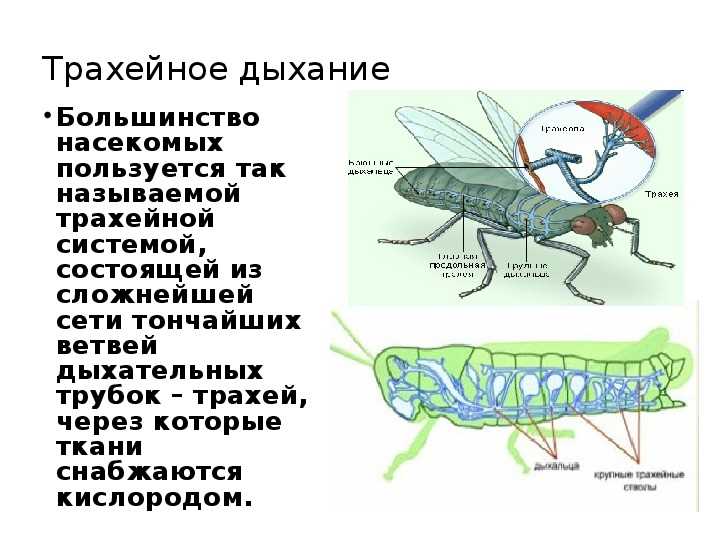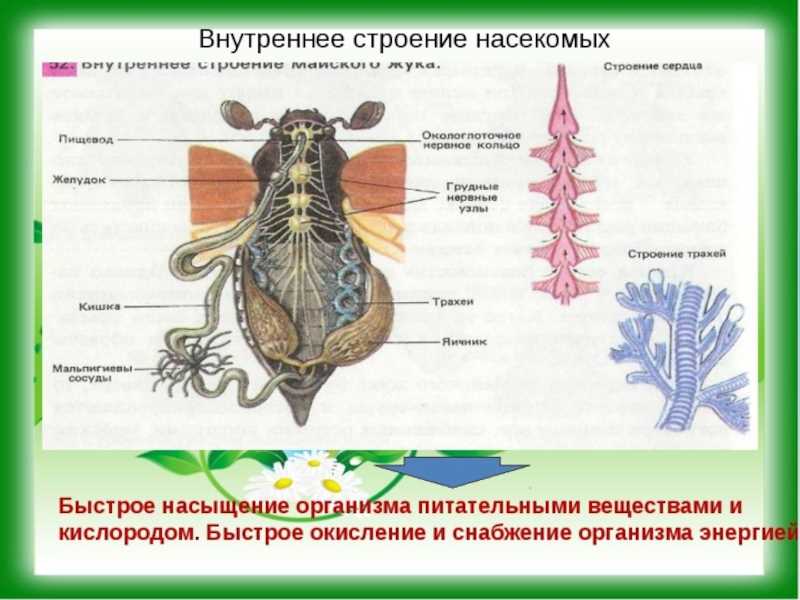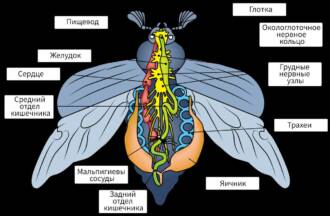
Butterflies are amazing creatures with a complex and unique nervous system. The nervous system of butterflies allows them to interact with the environment and adapt to various living conditions. They have developed sense organs that allow them to navigate in space and detect danger.
Butterflies have different receptors that help them perceive different environmental stimuli. They use their antennae to detect scents and pheromones, which allows them to find food and breeding partners. They also have visual organs that help them perceive light and colors. Butterflies can see both ultraviolet and infrared, which allows them to detect danger and navigate their environment.
The nervous system of butterflies is also responsible for their movement and response to external stimuli. They have the ability to instantly react to danger and maneuver in the air with their wings. Butterflies can also respond to changes in environmental temperature and humidity, allowing them to adapt to different climates.
The structure of the nervous system in butterflies

The nervous system in butterflies consists of several components that allow them to interact with the environment and carry out various behavioral responses.
Brain

The main part of the nervous system is located in the head of the butterfly and consists of the brain. The cerebrum controls the basic functions of a butterfly, including locomotion, foraging, and reproduction.
Ganglia and nerve connections

Along the body of the butterfly are ganglia - clusters of nerve cells that perform various functions. The ganglia are connected to each other by nerve fibers, forming a nerve network that extends throughout the body of the butterfly.
Nerve connections allow you to transfer information between different parts of the body and the brain. This allows the butterfly to respond to changes in the environment and take appropriate action.
Receptors and neurotransmitters

Butterflies have various receptors that allow them to perceive their environment. For example, they can smell, see colors, and feel touch.
Neurotransmitters, chemicals that carry information from one nerve cell to another, are used to transmit signals between nerve cells. This allows information to be transmitted quickly and efficiently in the butterfly's nervous system.
Nerve cell system and signaling
The nervous system of butterflies consists of many nerve cells that provide signal transmission. It consists of a central nervous system, including the head and thoracic ganglia, as well as a peripheral nervous system, including nerve fibers and receptors located throughout the butterfly's body.
The transmission of signals in the nervous system of butterflies is carried out by means of electrical impulses that occur when the electrical potential of the membrane of the nerve cell changes. Nerve cells transmit signals to each other through synapses, the points of contact between nerve cells.
In the process of signal transmission at the synapse, neurotransmitters are released - chemicals that carry the signal from one nerve cell to another. Neurotransmitters are transported through the space between nerve cells - the synaptic cleft. At the other end of the synapse, there are receptors that receive neurotransmitters and transmit the signal further.
Thus, the nerve cell system and signaling are the main components of the nervous system of butterflies, allowing them to respond to the environment and carry out the necessary actions.
Sensitivity to light

Butterflies are highly sensitive to light and this plays an important role in their behavior and survival. They are able to perceive various wavelengths of light, including the ultraviolet spectrum, which is invisible to the human eye.
Butterflies' sensitivity to light is due to their eyes, which are made up of many microscopic facets called ommatidia. Each ommatidia contains its own photoreceptors that respond to light and transmit signals to the butterfly's nervous system.
Due to their sensitivity to light, butterflies can navigate in space, find food and avoid danger. They use light signals to communicate with other members of their species, such as to attract a mate or warn of a potential threat.
Sensitivity to light is especially important for butterflies during migration. They can navigate by the sun and stars to find their way to their destination over long distances. In addition, some species of butterflies are able to migrate only at night, when light conditions are most favorable for them.
In general, sensitivity to light is one of the most important features of the nervous system in butterflies, allowing them to successfully exist and adapt to the environment.
Features of vision in butterflies
Vision is one of the main sense organs in butterflies. They have developed a complex eye system that allows them to perceive the environment and navigate it.
Butterflies have two types of eyes: compound eyes and simple eyes. Compound eyes are made up of many small eyes called facets. They are arranged in hexagons and allow butterflies to see the world in many small images. This arrangement of eyes allows butterflies to detect moving objects and navigate in space.
Simple eyes in butterflies are represented by three point organs, which are located on the top of the head. They serve for the perception of light and darkness, as well as for orientation in the sun and sky. Thanks to simple eyes, butterflies can determine the time of day and choose the right place to rest or search for food.
The visual system of butterflies also has the ability to perceive colors. They have different types of photoreceptor cells that respond to different wavelengths of light. Because of this, butterflies can see a wide range of colors, including the ultraviolet range, which is invisible to us.
Interestingly, some species of butterflies are able to see polarized light. This allows them to navigate in space and find food or breeding partners. They can use the polarization of light reflected from water or plants to determine their location and decide on their next course of action.
Thus, the peculiarities of vision in butterflies provide them with the ability to navigate in the environment, search for food and partners, and also evade dangers. Their complex and simple eyes, as well as their ability to see colors and the polarization of light, make them one of nature's most amazing creatures.
The role of the nervous system in flight
The nervous system plays a key role in the flight of butterflies, providing coordination and control of their movements. It allows butterflies to maneuver in the air, change the direction of flight and evade obstacles with maneuverability.
The main organ of the nervous system of butterflies is the head ganglion - a large cluster of nerve cells located in the head. From the head ganglion, nerve fibers spread throughout the body, providing a connection between the head and the rest of the butterfly's body.
An important role in flight is played by sensory nerves, which are located on the wings of butterflies. They respond to changes in wind speed and direction, which allows the butterfly to control its flight and maintain stability in the air. This is especially important during maneuvers and when landing on a flower or other surface.
In addition, the nervous system of butterflies is responsible for coordinating and regulating the work of the muscles necessary for flight. It controls the contraction and relaxation of muscles, which allows the butterfly to change the shape of the wings and create the necessary lift for flight.
Thus, the nervous system plays an important role in the flight of butterflies, providing them with the ability to maneuver in the air, control flight and maintain stability. It is one of the key adaptations that allow butterflies to survive and reproduce in a variety of environmental conditions.
Reaction to sound signals
Butterflies have a highly developed nervous system that allows them to perceive and respond to many different stimuli in their environment. One such stimulus is sound signals.
Butterflies have specialized hearing organs, which are located on the wings and body of insects. These organs, called tympanic membranes, allow the moths to perceive sound waves and transmit them to the nervous system for processing.
When a butterfly perceives a sound signal, it can show different types of reactions depending on the characteristics of the sound and the situation.
1. Run and hide

If a butterfly perceives a sound signal that indicates danger or poses a threat to its survival, it may react instantly by running away or hiding. This allows her to avoid potential danger and save her life.
2. Attracting a partner

In some species of butterflies, sound signals play an important role in attracting a breeding partner. They emit specific sounds that serve as a signal to the opposite sex. This allows them to find partners and continue their kind of species.
In general, the response to sound signals in butterflies is an important aspect of their behavior and adaptation to the environment. It allows them to survive, reproduce and successfully adapt to changing conditions in nature.
The effect of temperature on the nervous system
Ambient temperature has a significant effect on the nervous system of butterflies. When the temperature rises or falls, the body of butterflies is exposed to stress, which can affect their nervous system.
Response to rising temperature:
When the ambient temperature rises, butterflies activate their nervous system to maintain their optimal body temperature. The nervous system regulates the work of organs and systems, providing thermoregulation. There is an activation of the sympathetic nervous system, which leads to the expansion of capillaries and increased blood circulation, which helps to cool the body.
Reaction to temperature decrease:
When the ambient temperature drops, butterflies can slow down their activity and go into a dormant state. The nervous system inhibits the activity of organs and systems in order to conserve energy and prevent heat loss. Butterfly organisms can also increase the synthesis of specific proteins that help protect nerve cells from the cold.
Adaptation to extreme temperatures:
Some species of butterflies are able to adapt to extreme temperatures. They can change their physiology and behavior to survive in extreme temperature fluctuations. For example, some species of butterflies can change the color of their wings to absorb or reflect more heat depending on the ambient temperature. This allows them to regulate their body temperature and keep their nervous system in optimal condition.
Sensitivity to odors

Butterflies have an amazing sense of smell, which allows them to find food and breeding partners.
The nervous system of butterflies has specialized receptors that detect chemicals in the air. These receptors are located on the antennae and legs of butterflies.
Odor detection mechanism
When a butterfly encounters a scent, receptors on its antennae and legs react to the chemicals, creating an electrical signal. This signal is transmitted along the nerve cells to the butterfly's brain, where information is processed.
Sensitivity to pheromones
Butterflies use pheromones to communicate with other members of their species. Pheromones are chemicals secreted by one individual and perceived by others. Due to their sensitivity to pheromones, butterflies can find breeding partners, as well as determine their territory and warn of possible dangers.
The role of smells in finding food
Smells also play an important role in the search for food for butterflies. They detect plant odors, which may contain leaf caterpillars or flower nectar. Due to their sensitivity to odors, butterflies can quickly find a food source.
In general, odor sensitivity is an important aspect of the butterfly nervous system, allowing them to navigate their environment and perform important life functions.
Adaptation to changes in the environment
Butterflies are small insects that have an amazing ability to adapt to changes in their environment. This is due to the peculiarities of their nervous system, which plays a key role in responding to external stimuli.
visual orientation. Butterflies have a developed visual apparatus that helps them navigate in the surrounding space. They are able to notice changes in the color, shape, and movement of objects, allowing them to quickly react to possible dangers or new food sources.
chemical receptors. Butterflies also have developed chemical receptors that help them detect and analyze chemicals in their environment. This is especially important for finding a breeding partner and finding a suitable place to lay eggs.
response to temperature changes. Butterflies have the ability to respond to changes in environmental temperature. They can change their activity depending on the temperature, being in the shade or in the sun to regulate their body temperature.
Migrations. Some species of butterflies are able to make long-distance migrations in search of favorable conditions for life. They use their nervous system to determine the direction and duration of a flight, as well as to find places with the most food and suitable breeding conditions.
Mimicry. Butterflies can also use their nervous systems to mimic other species that are dangerous or distasteful to predators. This helps them avoid attacks and remain undetected in the environment.
In general, the nervous system of butterflies is an important factor in their adaptability to changes in the environment. It allows them to quickly and effectively respond to external stimuli and ensures their survival in various conditions.
The role of the nervous system in reproduction

The nervous system plays an important role in the reproduction process in butterflies. She controls and coordinates various aspects of this process, including sexual behavior, mate selection, and finding a place to lay eggs.
Sexual Behavior: The nervous system controls the sexual behavior of butterflies, regulating their activity, movement and orientation in space. It carries out the transmission of nerve impulses that affect the manifestation of sexual instincts and reactions to smells, sounds and visual signals from partners.
Partner choice: The nervous system also plays a role in choosing a breeding partner. Butterflies are able to evaluate various characteristics of potential mates, such as their size, color, and scent. The nervous system allows them to make decisions based on these signals and choose the most suitable partner for successful reproduction.
Finding a place to lay eggs: The nervous system also helps butterflies find suitable places to lay their eggs. It provides spatial orientation and responds to environmental cues such as smells, temperature, and lighting. Thanks to the nervous system, butterflies can choose the optimal conditions for the development and survival of offspring.
Thus, the nervous system is an integral part of the reproductive process in butterflies, enabling them to engage in sexual behavior, choose a mate, and find a suitable place to lay their eggs.
Protective mechanisms of the nervous system in butterflies

The nervous system in butterflies has a number of defense mechanisms that help them survive in the environment and protect themselves from dangers.
1. Reflex reactions. Butterflies have fast reflex responses to external stimuli. For example, when a predator approaches, a butterfly can instantly make a sharp turn and fly away in the opposite direction.
2. Mimicry. Some species of butterflies have special colorations that allow them to camouflage themselves as other animals or plants. For example, a butterfly may be colored like a bright flower petal or a dangerous predator. This helps them avoid the attention of predators and go unnoticed.
3. Poison. Some butterflies have bright colors that serve as a warning to predators. This means that these butterflies contain poisonous substances in their bodies that can harm the predator. Thanks to this, predators avoid attacking these butterflies, which helps them survive.
4. Accelerated response to sound. The nervous system of butterflies has the ability to quickly respond to sound signals. This allows them to fly away when a human or other predator approaches, based on the sounds they hear.
Thus, the protective mechanisms of the nervous system in butterflies play an important role in their survival. They allow butterflies to quickly react to danger, camouflage themselves and scare off predators, providing them with a high degree of protection in the environment.






